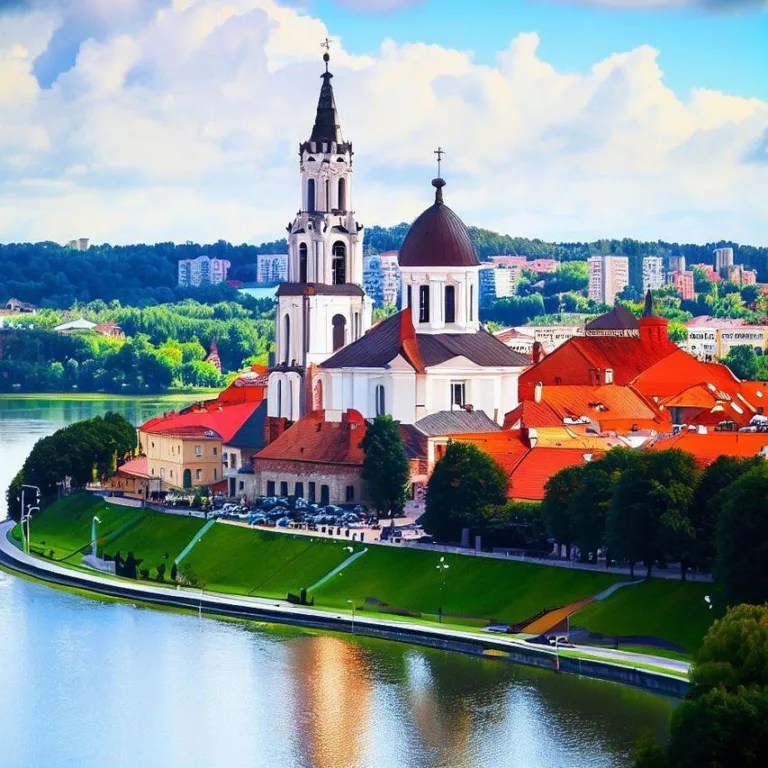Welcome to our comprehensive guide on Kaunas, the cultural and historical gem of Lithuania. Situated on the confluence of the Nemunas and Neris rivers, Kaunas holds a special place in the heart of Lithuania, boasting a rich history, vibrant culture, and stunning architecture. In this article, we’ll delve into the captivating story of Kaunas, from its origins to its modern-day charm, highlighting its key attractions and providing you with all the essential information you need to explore this remarkable city.
The historical tapestry of kaunas
Kaunas has a history that dates back to ancient times, with archaeological evidence suggesting human presence in the area as far back as the Stone Age. Throughout the centuries, the city has witnessed the rise and fall of various empires, including the Grand Duchy of Lithuania and the Polish-Lithuanian Commonwealth.
In the 20th century, Kaunas became the provisional capital of Lithuania when Vilnius was occupied by Poland. The city played a pivotal role in the struggle for Lithuanian independence, and its resilience is reflected in its architecture and spirit.
Architectural marvels
The architectural landscape of Kaunas is a blend of different styles, each reflecting the city’s history and cultural influences. The Old Town, with its charming cobblestone streets and Gothic, Renaissance, and Baroque buildings, is a UNESCO World Heritage Site. The Kaunas Castle, a medieval fortress, stands as a testament to the city’s medieval past.
The interwar period saw the emergence of innovative modernist architecture, earning Kaunas the nickname „Little Paris.“ The Žaliakalnis Funicular Railway and the iconic Christ’s Resurrection Church are just a couple of examples of the city’s architectural prowess during this time.
Cultural oasis
Kaunas boasts a thriving cultural scene that caters to all tastes. The M. K. Čiurlionis National Art Museum showcases the works of Lithuania’s most celebrated artist. The Devils‘ Museum, a unique institution dedicated to devil-related art, is a testament to the city’s quirky side.
The annual Kaunas Jazz Festival, one of Europe’s longest-running jazz events, draws music enthusiasts from around the world. The city’s theaters, galleries, and music venues offer a diverse range of performances, ensuring there’s always something captivating to experience.
Gastronomic delights
Exploring Kaunas is incomplete without indulging in its culinary offerings. The city’s food scene combines traditional Lithuanian dishes with international flavors. From hearty cepelinai (potato dumplings) to modern fusion cuisine, Kaunas has something for every palate.
The bustling Liberty Avenue (Laisvės alėja) is a hub for cafes, restaurants, and street food stalls, offering a delightful gastronomic journey.
Faqs about kaunas
What is Kaunas known for?
Kaunas is known for its rich history, architectural diversity, and vibrant cultural scene. It played a significant role in Lithuania’s struggle for independence and is home to captivating museums, churches, and art galleries.
How do I get to Kaunas?
Kaunas is easily accessible by air, with Kaunas International Airport serving both domestic and international flights. It’s also well-connected by train and bus networks, making it convenient to travel to and from the city.
What are the best times to visit Kaunas?
The best times to visit Kaunas are during the spring (April to June) and summer (July to August) months when the weather is pleasant and many outdoor events take place. However, each season offers a unique charm, and the city’s attractions are enjoyable year-round.
Is English widely spoken in Kaunas?
While Lithuanian is the official language, many people in Kaunas, especially in the hospitality and tourism sectors, speak English. You’ll find it relatively easy to communicate and navigate the city using English.
What are some must-visit attractions in Kaunas?
Some must-visit attractions in Kaunas include the Old Town, Kaunas Castle, M. K. Čiurlionis National Art Museum, Devils‘ Museum, Christ’s Resurrection Church, and the Ninth Fort. Each offers a unique glimpse into the city’s history and culture.
Can I explore Kaunas on foot?
Absolutely! Kaunas is a walkable city, especially in the Old Town area. Many of the city’s attractions, restaurants, and shops are within walking distance of each other, allowing you to immerse yourself in its charming streets and vibrant atmosphere.
Viz také:






